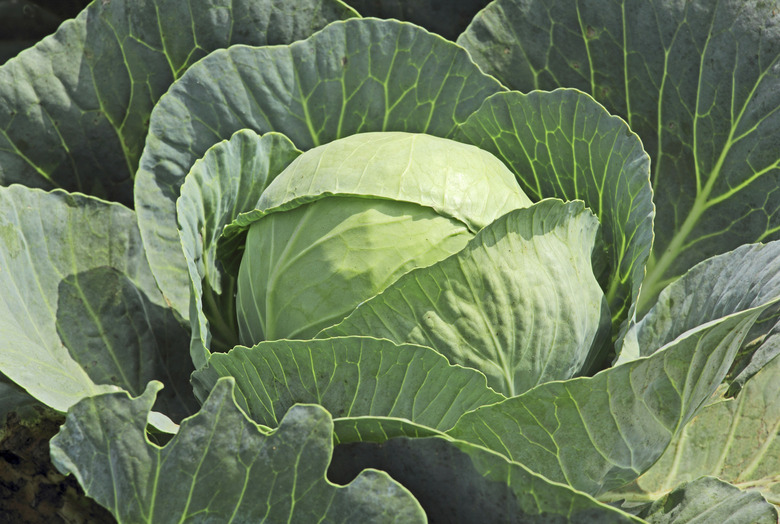What To Do When Bugs Are Eating Your Cabbage Plants In The Garden
We may receive a commission on purchases made from links.
Holes on leaves, veins chewed through, and plants gnawed from the ground up are not what you planned on when you planted cabbage (Brassica oleracea). Something's been feasting on the fruits of your labors, and you want it to stop. Unfortunately, a whole rogue's gallery of caterpillars and insects can infest these annual vegetables. By properly identifying these pests and using the right techniques to control them, you can take your cabbage plants off their menu.
Crawly Cabbage Pests
Crawly Cabbage Pests
The first sign of the cabbageworm is small, innocuous-looking white butterflies. The cabbageworm larvae are green caterpillars that leave gaping holes on outer cabbage leaves. Another destructive pest, the cabbage looper, is named for the looping way it moves. Looper larvae leave sharp-edged but irregular little holes as they feed between the leaf veins. Adults are grayish-brown moths that lay eggs — ridged, white and round — singly on leaf undersides.
Cutworms, which look like grayish or brownish grubs, cause serious damage to cabbage stems and foliage. They can be found close to the soil, feeding on developing cabbage heads.
Other Insect Invaders
Other Insect Invaders
Flea beetles, so called because they jump when disturbed, leave sharp-edged, tiny round holes on cabbage. If uncontrolled, they can kill your cabbage plants. Flea beetles can be difficult to control once established, so plan your attack in advance and watch for their arrival. Cabbage aphids are pale green like other aphids, but they exhibit a grayish, waxy coat. They normally infest the undersides of cabbage plants. Aphids cause curling, wrinkled leaves; stunted plants; and ruined cabbage heads.
Manual Pest Control
Manual Pest Control
Try some nontoxic pest control methods before reaching for harmful chemicals. Stop cabbageworms and loopers by picking them off by hand. Squash them or drop them in a bucket of soapy water. Control cutworms with a physical barrier by placing a 3-inch-high cardboard collar around each cabbage plant, pushed down 1 inch into the soil. A toilet paper or paper towel tube works well for very young, tender plants, and you can leave it in place until it decomposes. Hand-pick cutworms that bypass barriers and drop them into a bucket of soapy water.
Control aphids by releasing beneficial lady beetles or spraying the cabbage with forceful jets of water. Aluminum foil placed under cabbage reflects sunlight upward, creating a habitat unattractive to aphids. Floating row covers are sheets of translucent, spun-fiber material that creates a barrier against all insects.
Resorting to Pesticides
Resorting to Pesticides
If manual methods aren't sufficient, turn to natural pest-control remedies. Control flea beetles by mixing 2 to 4 tablespoons of neem oil concentrate with 1 gallon of water and spraying cabbage thoroughly. Control cabbage loopers, cabbageworms, cutworms, and aphids with ready-to-use insecticidal soap. Spray thoroughly so soap contacts the pests.
For crawly critters, use the bacterial insecticide Bacillus thuringiensis (Bt). Mix 1 to 3 teaspoons of Bt concentrate with 1 gallon of water and spray leaves thoroughly. Worms die after eating treated foliage. These sprays can all be applied up to the day of cabbage harvest, but note that Bt doesn't distinguish between unwanted worms and butterfly caterpillars. Wear gloves, protective clothing, and protective eyewear when you spray.
